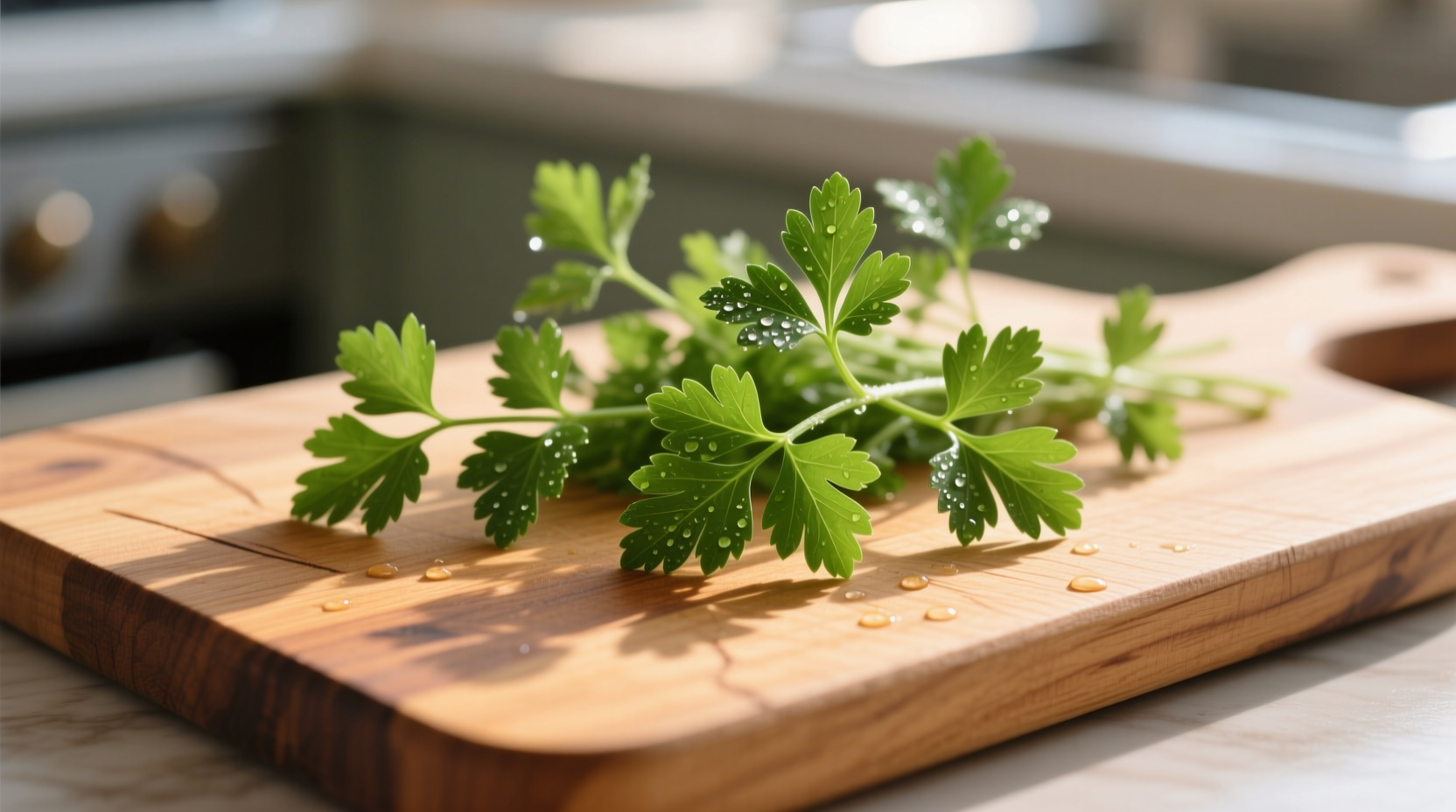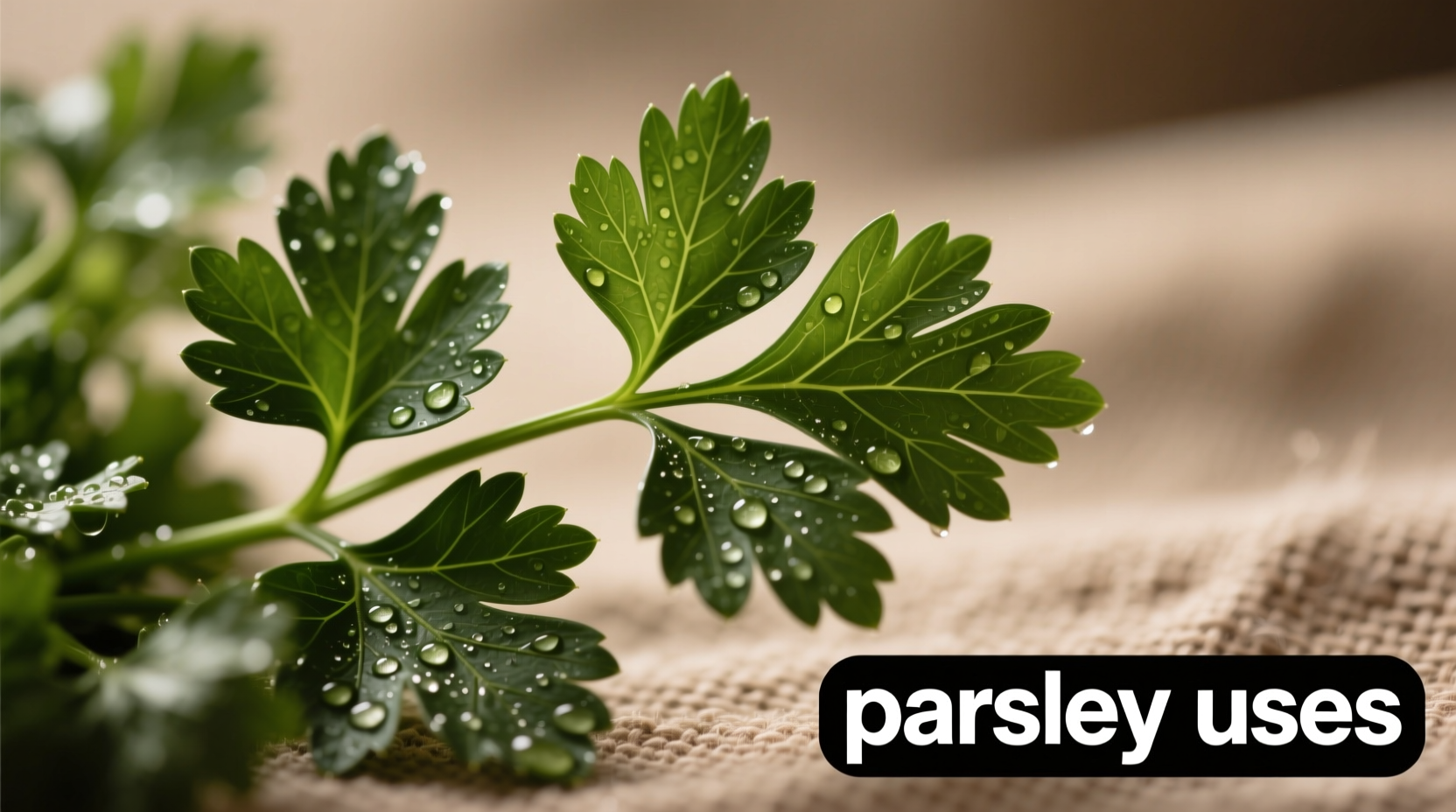Parsley offers versatile culinary, nutritional, and practical applications beyond basic garnishing. This comprehensive guide reveals 12 evidence-based uses including flavor enhancement techniques, nutritional benefits, historical applications, and professional chef methods for maximizing parsley's potential in everyday cooking.
Most home cooks relegate parsley to a decorative plate garnish, but this humble herb holds remarkable culinary versatility and nutritional value. With over two decades of professional kitchen experience, I've discovered parsley's transformative power when used intentionally rather than as an afterthought. Understanding its proper applications can elevate your cooking from ordinary to extraordinary while providing meaningful nutritional benefits.
Why Parsley Deserves More Than Garnish Duty
Far from being merely decorative, parsley contains essential vitamins A, C, and K, plus valuable antioxidants. The USDA National Nutrient Database confirms that just one-quarter cup of fresh parsley delivers 20% of your daily vitamin A requirement and over 100% of vitamin K. Unlike many herbs that lose potency when dried, parsley maintains significant nutritional value whether fresh or dried, though fresh varieties offer superior flavor complexity.
| Parsley Type | Flavor Profile | Best Culinary Applications | Storage Duration |
|---|---|---|---|
| Flat-leaf (Italian) | Bold, earthy, robust | Sauces, stews, marinades | 10-14 days refrigerated |
| Curly-leaf | Milder, slightly bitter | Garnishes, salads, soups | 7-10 days refrigerated |
| Root parsley | Earthy, celery-like | Stocks, roasts, root vegetable dishes | 3-4 weeks refrigerated |
Culinary Applications That Transform Ordinary Dishes
Professional chefs leverage parsley in ways that home cooks often overlook. The key lies in understanding when and how to incorporate it for maximum flavor impact.
Building Flavor Foundations
Chopping parsley stems finely and adding them early in cooking creates a flavor base similar to celery or carrots. The stems contain concentrated flavor compounds that infuse dishes with herbal complexity. Try this technique in soups, stews, and sauces where you'd normally use mirepoix.
Creating Vibrant Finishing Touches
Unlike delicate herbs like basil, parsley withstands brief cooking while retaining freshness. Add chopped leaves during the last two minutes of cooking to preserve their bright flavor and color. This technique works particularly well with pasta dishes, roasted vegetables, and grilled meats.
Mastering the Parsley Oil Technique
Blending parsley with neutral oil creates an emerald-green infusion that elevates simple dishes. Combine one cup packed parsley leaves with ½ cup grapeseed oil, blend until smooth, then strain through cheesecloth. This oil adds sophistication to fish dishes, vegetable preparations, and even salad dressings.

Nutritional Benefits Backed by Research
While not a miracle cure, parsley offers meaningful nutritional contributions when incorporated regularly into your diet. Research published in the Journal of Agricultural and Food Chemistry identifies parsley as containing apigenin, a compound with potential anti-inflammatory properties. The herb's high vitamin K content supports bone health, while its vitamin C content aids iron absorption from plant-based foods.
Important context: These benefits come from regular culinary use, not medicinal doses. Consuming parsley as part of a balanced diet provides nutritional value without the risks associated with concentrated supplements.
Practical Applications Beyond the Plate
Chefs and home cooks alike discover unexpected uses for parsley that extend beyond traditional cooking applications.
Natural Breath Freshener
Chewing fresh parsley sprigs after meals helps neutralize strong food odors like garlic and onions. The chlorophyll content acts as a natural deodorizer, making this an effective, chemical-free breath freshening technique used in professional kitchens worldwide.
Color Preservation for Vegetables
Adding a few parsley sprigs to boiling water when cooking green vegetables helps maintain their vibrant color. The alkaline compounds in parsley counteract the acid that causes color degradation during cooking.
Homemade Cleaning Solution
Boiling parsley stems creates a mild, naturally fragrant cleaning solution suitable for non-porous surfaces. While not a replacement for proper disinfectants, this solution works well for general kitchen surface cleaning and leaves a pleasant herbal scent.
Avoiding Common Parsley Mistakes
Understanding parsley's limitations prevents culinary disappointments:
- Don't overcook parsley - Prolonged heat turns it bitter and dulls its vibrant color
- Avoid washing until ready to use - Excess moisture accelerates spoilage
- Don't substitute dried for fresh in finishing applications - Dried parsley lacks the bright flavor needed for final touches
- Store properly - Wrap in slightly damp paper towel inside airtight container
Seasonal Considerations for Optimal Flavor
Parsley's flavor profile changes throughout the growing season. Spring-harvested parsley offers the most delicate flavor, while summer parsley develops more robust, slightly bitter notes. In professional kitchens, we adjust usage based on seasonal variations - using spring parsley raw in salads and summer parsley in cooked applications where its stronger flavor holds up better.
Maximizing Your Parsley Investment
Reduce waste and maximize flavor by using every part of the plant:
- Freeze chopped stems in olive oil for instant flavor bases
- Dehydrate leaves for winter use in soups and stews
- Use root parsley (where available) in place of celery in stocks
- Create parsley salt by blending dried leaves with sea salt
Conclusion: Elevating Everyday Cooking
When used intentionally rather than as mere decoration, parsley becomes a powerful culinary tool. By understanding its flavor profile, nutritional benefits, and proper applications, you can transform ordinary dishes into extraordinary meals. Start incorporating these techniques today to experience the remarkable difference that proper parsley usage makes in your cooking.











 浙公网安备
33010002000092号
浙公网安备
33010002000092号 浙B2-20120091-4
浙B2-20120091-4